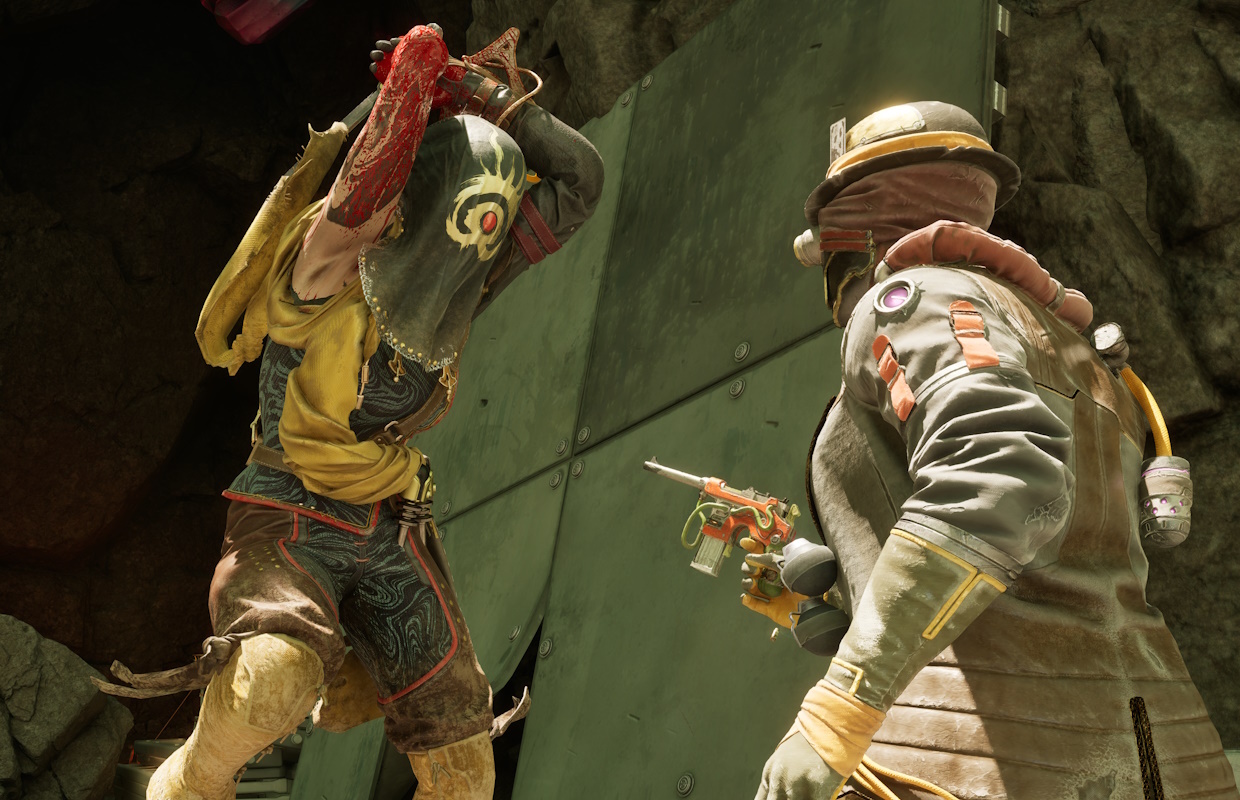
Honestly, it’s way easier to talk about games I love or hate. When a game is amazing, I can just share what I enjoyed and hope you feel it too. And with a bad game, it’s simple – point out what went wrong to save you some money. But The Outer Worlds 2? It’s tricky. It’s not a masterpiece, but it’s definitely not terrible either. It’s a weird mix of really good ideas and stuff that feels unfinished. And to be honest, there’s a lot of stuff going on outside the game itself that makes me hesitant to even recommend it, which makes writing this review really complicated.
The Outer Worlds 2 is a role-playing shooter similar to the first game. If you haven’t played it, think of it like a Fallout game – it was created by some of the same people, and shares a similar style. The game is full of witty, sarcastic writing and takes place in a world where capitalism and religion have gone to ridiculous extremes. Imagine an invading army made up of corporate employees trying to sell terrible products across space! You play as the Commander, an officer for the Earth Directorate, tasked with maintaining peace among the human colonies in the Arcadia region.
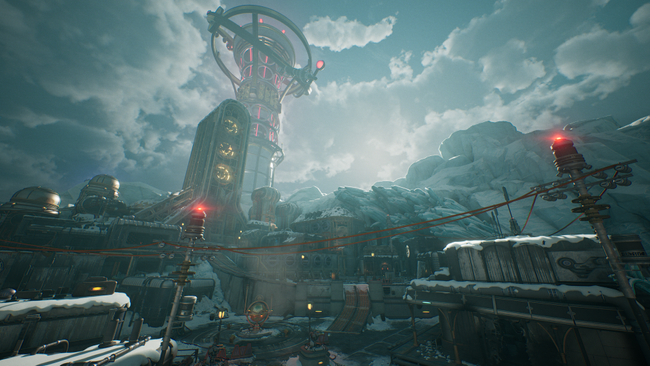
This game lets you fully customize your character, which is one of its best features. When creating your character, you choose skills and traits that define how you’ll play. You can focus on combat, using guns to overcome challenges, or prioritize dialogue and peaceful solutions. While there are many skills to choose from, you have a limited number of points, meaning you can’t become an expert at everything. Importantly, no single skill is overwhelmingly better than the others, so you’ll find a purpose for all of them – even ones like Medicine.
The game is designed to avoid blocking your progress, even if you don’t have certain skills. For instance, if you need to enter a room that requires either Engineering or Brawn to open the front door, you can usually find another way in. Perhaps you’ll spot a vent, or discover a different entrance that can be opened with either Hacking or Lockpicking. As long as you have at least one of these four skills, you’ll almost always be able to get where you need to go. If not, you can often find a key or one on a defeated enemy. This careful balance makes the game feel fair, even when a path is temporarily blocked, and encourages you to think about how you’ve built your character.
The fact that you can’t change your character’s build later in the game is a big deal, because the developers intentionally left that option out. They want you to really commit to your decisions, and that’s a good thing! While not everyone will love it, it encourages thoughtful role-playing instead of just resetting your character to overcome obstacles. It’s a design philosophy we particularly appreciate.
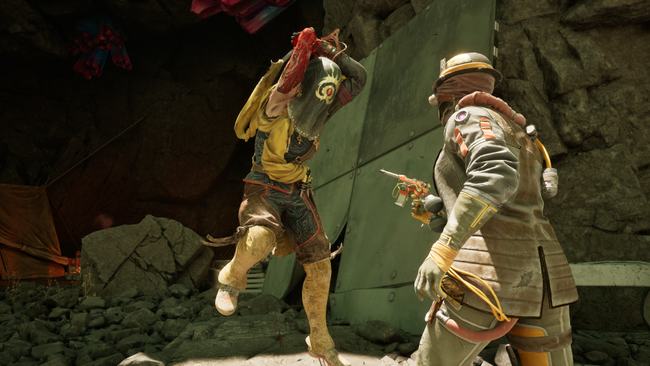
When you create your character, you can choose traits, which are powerful benefits that shape how your character plays. You can select up to two traits, but if you take a second one, you also need to choose a flaw. This system is a highlight of The Outer Worlds 2 – the flaws are significant drawbacks, but not so severe that they aren’t worth the trade-off. I chose the ‘Dumb’ flaw and highly recommend it. It prevents you from using certain skills at all, but it unlocks some of the game’s funniest dialogue, adding to its already strong sense of humor. It’s a fun way to play and really leans into the game’s comedic style.
The Outer Worlds 2 really exaggerates the extremes of capitalism. You’ll encounter soldiers enthusiastically promoting terrible food, constantly trying to sell you things or complaining about their brutal work hours. There are also mathematicians who offer religious verses to desperate refugees instead of actual help, obsessing over predictions while ignoring immediate needs. And the military enforces conformity so strictly that any independent thought leads to ‘re-education’ – essentially, brainwashing.
The game doesn’t shy away from showing the downsides of extreme ideologies, and that’s okay – subtlety isn’t needed for this kind of message. The hyper-capitalist faction, Auntie’s Choice, portrays the dangers of unchecked capitalism in a blunt, almost forceful way. Employees, called things like ‘Corporate Liaison,’ routinely work incredibly long shifts – over sixteen hours – and rely on energy boosters (branded by Auntie’s Choice, naturally) to ignore their need for rest and a healthy life. They even pay for their own ammunition, are limited to Auntie’s Choice products, and constantly talk about work in sterile corporate terms. Hearing a soldier say, ‘I’m gonna climb that corporate ladder’ while hunting lizards on a frozen planet feels absurd – it’s the epitome of a relentless, unhealthy work ethic.
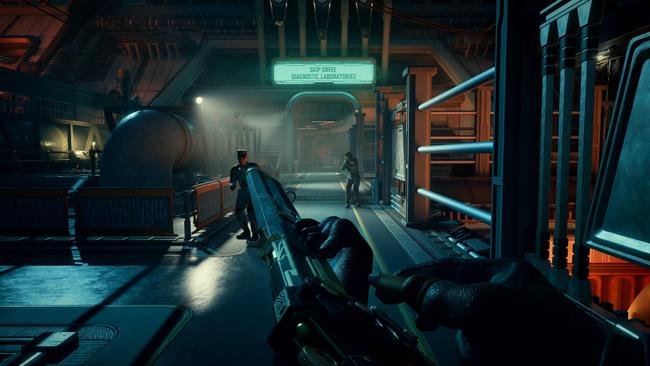
Besides the Syndicate, you can also join The Order, a group concerned with losing sight of the bigger picture. They believe in “The Absolute Equation,” a deliberately unsolvable problem. Solving it, they claim, would bring an end to conflict and elevate humanity. Like most faiths, it’s based on a paradox, but The Order isn’t just driven by religious zeal – they’re obsessed with the calculations themselves. As I mentioned before, it’s concerning that a group claiming moral authority through mathematics promises a better future while ignoring present-day problems.
You’re faced with a difficult situation in a town struggling to accommodate war refugees. They’ve taken up space that a group called The Order believes will eventually be destroyed by a major disaster. To make a decision, you need to talk to the refugees themselves. However, many members of The Order are so focused on providing education to the refugees that they’re overlooking the immediate, critical issues of a lack of beds and food.
The Outer Worlds 2 excels at moments where clever writing cuts through the surface of different governing systems, revealing their flaws. This is further enhanced by the game’s companions, who offer contrasting viewpoints to help you explore these issues. You can assemble a diverse crew representing various ideologies, often providing a more balanced perspective on each one. Take Tristan, for example. He’s an “Arbiter” from the Protectorate – a powerful, Judge Dredd-like figure who normally has absolute authority and punishes dissenting opinions. However, after joining your crew, he discovers that force and control aren’t effective outside Protectorate territory, and begins to question his lifelong beliefs about justice.
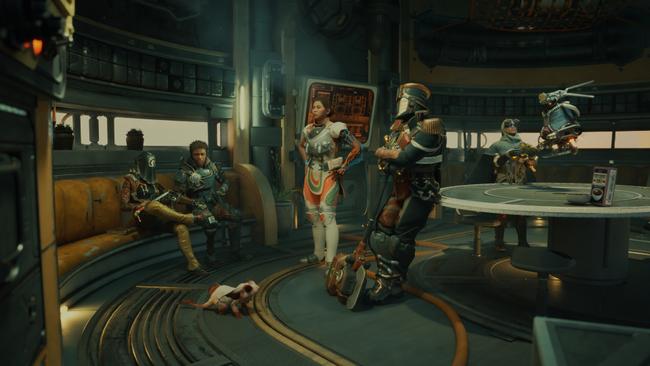
I’m really enjoying the companions in this game, though a couple of them have some frustrating quirks. Inez is the biggest one for me. There’s this quest where you have to mediate a labor dispute at Auntie’s Choice, and Inez used to work for them. She still cares about the company, even though she’s not contracted anymore. The thing is, if you don’t have the skills to resolve the dispute peacefully, you have to resort to violence and choose a side. I immediately sided with the workers, which I thought was the right thing to do. But the second I tried to physically stop the awful manager from harming them, Inez pulled me aside and lectured me about not needing to use violence against Auntie’s Choice employees! I honestly felt so frustrated – I didn’t have any other options with my skills at that point, and the game does give companions some leeway, but it still bothered me that she’s all for helping the workers in theory, but gets upset when you actually take action. It almost feels like a commentary on modern-day performative activism, which is a really interesting touch.
The game’s trait and perk system is well-written and adds a lot to the experience. As you play, repeating certain actions can give your character Flaws – these are essentially opportunities to lean into specific playstyles. For instance, constantly sneaking around will eventually lead to Bad Knees, which boosts movement speed while crouching but also makes a cracking sound that can alert nearby enemies. Similarly, skipping through dialogue quickly might give you Foot-In-Mouth Syndrome, rewarding you with extra experience but also causing the game to randomly select your conversation choices if you don’t respond fast enough.
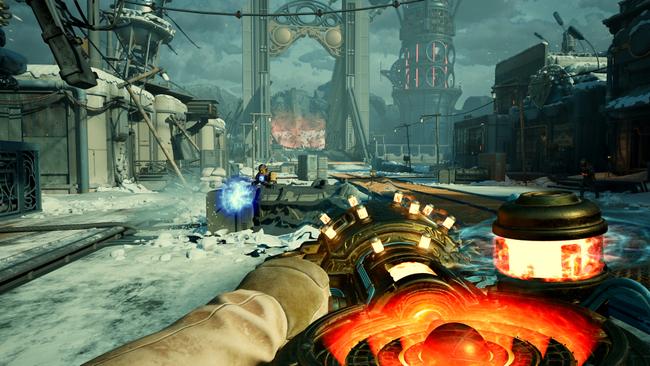
Sadly, that’s pretty much where my positive impressions of The Outer Worlds 2 stop. While the shooting is better than in the first game, it still doesn’t feel very good. The bio-mass weapons are particularly frustrating – they have awkward arcs, slow reload times, and an overly dramatic reload animation that blocks a huge portion of the screen for far too long. This is a major issue, considering the game is mostly about shooting. Only the Heavy Revolvers and Sniper Rifles felt powerful and satisfying; the rest just felt… lacking. I can’t quite put my finger on why, but even with good stats, the guns felt stiff and weak.
The game lets you customize weapons with modifications, but the system isn’t perfect. Weapons have only two or three modification slots, and once you use a mod, you can’t reuse or upgrade it. This means that once you find a weapon that works well with your playstyle, you’re likely to stick with it for the rest of the game. I experienced this firsthand – after getting a sniper rifle mid-game, I rarely used anything else, except for a mini-rocket launcher when stealth wasn’t an option. That is, until I discovered the Bullet Blender, which finally gave me a reason to consider a different weapon.
Early in the game, if you look carefully, you can find a special, high-security chest on your ship. This chest opens with Advanced Keycards you collect as you play. Inside, you’ll find the Bullet Blender, a machine gun that’s better than any other weapon, no matter how you’ve built your character. It uniquely combines all your different types of ammo into one, meaning you never have to reload. It’s incredibly effective against bosses, even if you don’t usually focus on machine guns or weapons in general. Honestly, it’s a bit too powerful – which is funny considering the game is all about finding the strongest, most ridiculous weapons and destroying things with them.
Honestly, exploring in The Outer Worlds 2 could get a bit of a drag. It’s cool that you unlock fast travel points as you go, which is handy for side quests and going back to places, but a lot of the planets just felt…empty. You end up running through big, open fields and plains with not much to see except the occasional building or a few lizards. There are cool things to discover, but all that walking through mostly nothing got old quickly, and it was especially frustrating because it happened on the very last planet you unlock – the one you’re supposed to be most excited about!
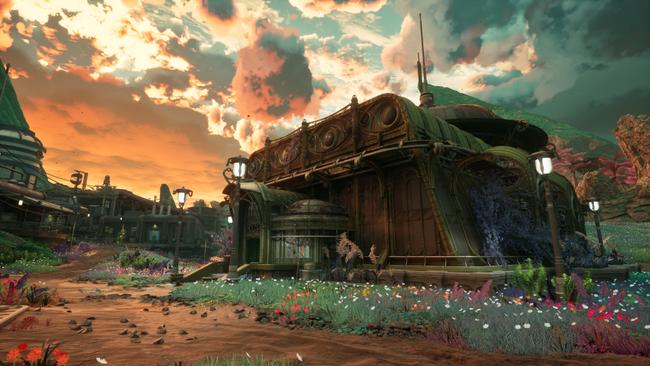
While exploring the open world wasn’t very engaging, the game truly excels in its dungeons. These areas are packed with alternate paths, clever puzzles, and multiple ways to overcome challenges – including different approaches to enemies and hidden treasure. The main story dungeons are especially exciting. Every time I unlocked a new dungeon – which often turned out to be places like training centers or factories – I couldn’t wait to dive in. One memorable dungeon involved navigating treacherous hallways, then using hacking skills to turn the traps against the enemies, which made the rest of the area much easier. Basically, the dungeons offer rewarding and interesting exploration, but the open world feels a bit empty in comparison.
I think the game’s environmental design is a key element, and it’s quite a mixed bag. Places like Auntie’s Choice Flagship, or the Undisputed Claim, are incredibly immersive – almost to a fault. From the moment you board, you’re constantly bombarded with advertisements. There’s really nowhere to escape the Hoarst Wurst jingles or salespeople, which I found surprisingly well-executed. However, when you visit planets like the snow or forest world, they feel surprisingly empty. Beyond some interesting plants or rocks, there’s a lot of unused space that left me feeling underwhelmed.
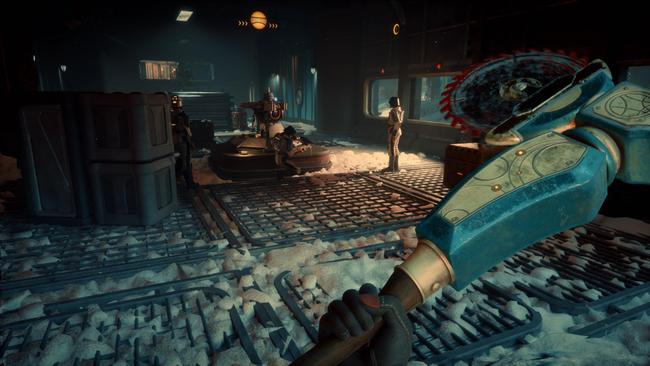
Overall, the game is pretty good, with some genuinely enjoyable parts like the story, character progression, and dungeon crawling. However, much of the rest of the game feels empty and disappointing. While it has moments of brilliance, it ultimately left me feeling unsatisfied. Even if it were a perfect game, certain outside factors would still make it hard to fully recommend it – it just doesn’t quite reach its full potential.
I’m really excited about The Outer Worlds 2! Obsidian Entertainment is behind it, and they’re one of my all-time favorite developers – seriously, their worlds and stories are amazing. Every game they’ve made has been great, and I have high hopes for this one. But it’s complicated because Obsidian is now part of Xbox Game Studios, which is owned by Microsoft. Honestly, Microsoft has been really disappointing lately with all the layoffs and studio closures. But for me, the biggest issue is that Microsoft is on the BDS list due to concerns about actions related to the situation in Gaza, as highlighted by a UN commission. It’s tough being a fan when this is happening.
This situation understandably puts Microsoft-owned studios and their employees in a difficult position. Obsidian Entertainment, in particular, deserves better circumstances. However, this is the reality surrounding the release of The Outer Worlds 2. While our focus is reviewing games, it would be unfair to ignore the larger issues at play when they are this significant.
The Outer Worlds 2 delivers the same clever, fast-paced adventure as the first game. It reaches impressive heights, but also experiences significant lows. For RPG fans, the role-playing elements feel more impactful and rewarding than in the original game or Obsidian’s other recent title, Avowed. While it’s a fun experience on its own, it’s impossible to ignore the context of the real world. The game’s sharp critique of consumerism and unquestioning belief mirrors issues we face today, and those same real-world concerns inevitably shape how we perceive the game. Much like the difficult decisions within the game, our choices as players have weight – and in the real world, those consequences are genuine.
8
We tested The Outer Worlds 2 on PC via Steam. It’s also playable on PlayStation 5 and Xbox Series X|S.
Read More
- Super Animal Royale: All Mole Transportation Network Locations Guide
- Zerowake GATES : BL RPG Tier List (November 2025)
- Pokemon Theme Park Has Strict Health Restrictions for Guest Entry
- Shiba Inu’s Rollercoaster: Will It Rise or Waddle to the Bottom?
- I Love LA Recap: Your Favorite Reference, Baby
- xQc blames “AI controversy” for Arc Raiders snub at The Game Awards
- Best Keybinds And Mouse Settings In Arc Raiders
- Daisy Ridley to Lead Pierre Morel’s Action-Thriller ‘The Good Samaritan’
- Terminull Brigade X Evangelion Collaboration Reveal Trailer | TGS 2025
- Yakuza Kiwami 2 Nintendo Switch 2 review
2025-10-23 15:59